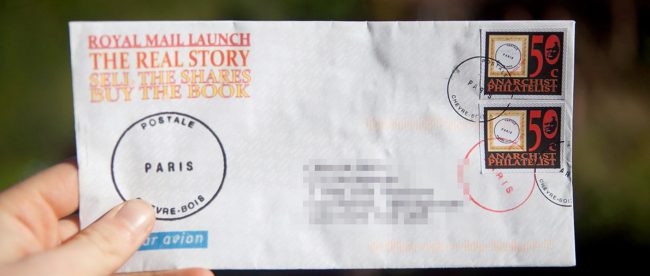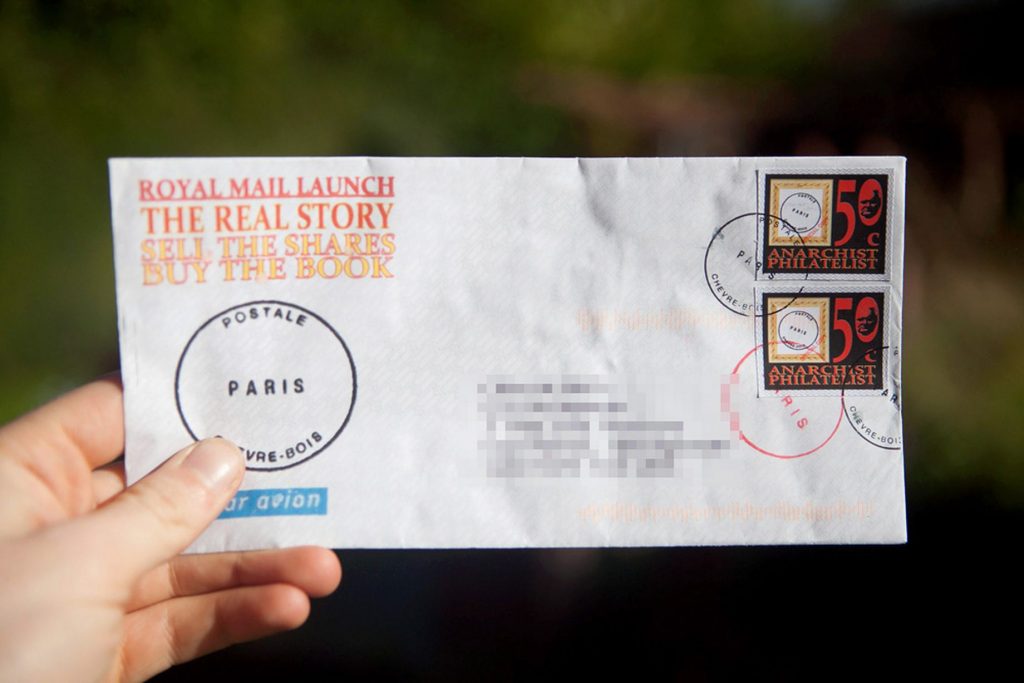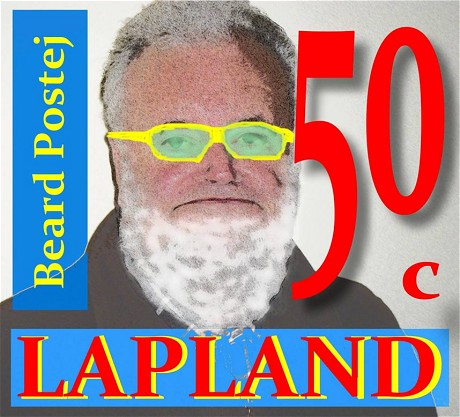Putting Your Own Stamp On It


Pictured above is a letter — and it’s a rather generic one at that. It has an address, a return address of sorts, and stamps — basically, everything you need in order for the postal service to deliver your letter to the intended address. The address is blurred out to maintain the privacy of the recipient. The stamps, which commemorates the life of anarchist philatelist, Angus McDonagh, have cancellation marks over and around them, suggesting this particular letter reached its intended destination. There’s nothing out of the ordinary about the letter above.
Except that there is.
If Angus McDonagh’s name isn’t familiar to you, that’s okay — it shouldn’t be. He’s not famous. He’s just some dude from Somerset, England, with a unique hobby: he makes fake stamps and uses them on real mail. His game? He wants to see if the Royal Mail will notice. And they usually don’t.
McDonagh, by day, is an architect. He’s a stamp aficionado — also known as a philatelist — on the side, and as communications became more and more digital, the man born in the late 1940s bemoaned the decline of snail mail and the stamps that it brings with it. In 2010, he decided that stamp design had gone boring and wanted to do something about it. But how does one protest against a lack of aesthetic investment in postal payment? On a lark, McDonagh simply took matters into his own hands and designed stamps which, to him at least, bought a spark of creativity into the upper-right corner of the white void that is an envelope.
And then he used some of them in lieu of actual postage. McDonagh’s stamps aren’t supposed to work — one would hope that the Royal Mail or equivalent would notice that McDonagh’s homemade postage, printed from a home computer and affixed with glue, weren’t legitimate. But the mail went through. McDonagh, surprised by this, kept on testing and testing, making increasingly more ridiculous designs as he went along. Like, this one:

Over a three-year period, McDonagh claims to have sent more than a hundred letters using stamps with his face on them. He sent some domestically within England but also pushed the envelope, so to speak, and mailed a few to France, New Zealand, Hong Kong, Canada, Italy, and Australia. And only one got bounced back for lack of postage.
McDonagh isn’t trying to commit fraud, though — to be clear, he probably is committing fraud, but he isn’t trying to. He tries to pay for the postage that he’s not buying, but can’t seem to get the Royal Mail to take his money. “My solicitor has sent a few cheques [to the Royal Mail] for around £200 with a letter saying it is for unpaid postage,” he told the Telegraph, “but they are always returned.” He decided to come clean with his scam in 2013, in part to get some attention for a book he wrote about his stamps, a story which aims to expose the gaps in the postal system. (The book, like the stamps, was self-published.)
A brief gallery of McDonagh’s stamps, plus the image above and a shot of him at “work,” can be found here.
Bonus fact: When Prince Charles and Princess Diana wed in 1981, the United Kingdom issued a commemorative stamp of the couple, seen here. It’s a real stamp but the picture is rather misleading. In it, for those who didn’t click, Charles is about a head taller than his wife. In reality, Prince Charles is 5’10” (about 1.78 meters), which would be taller than most women, but Princess Diana was not most women. She, too, was 5’10”.
From the Archives: Stamped Out: When the postal service makes a mistake, the resultant stamp is typically a valued collectible. But not in this case.
